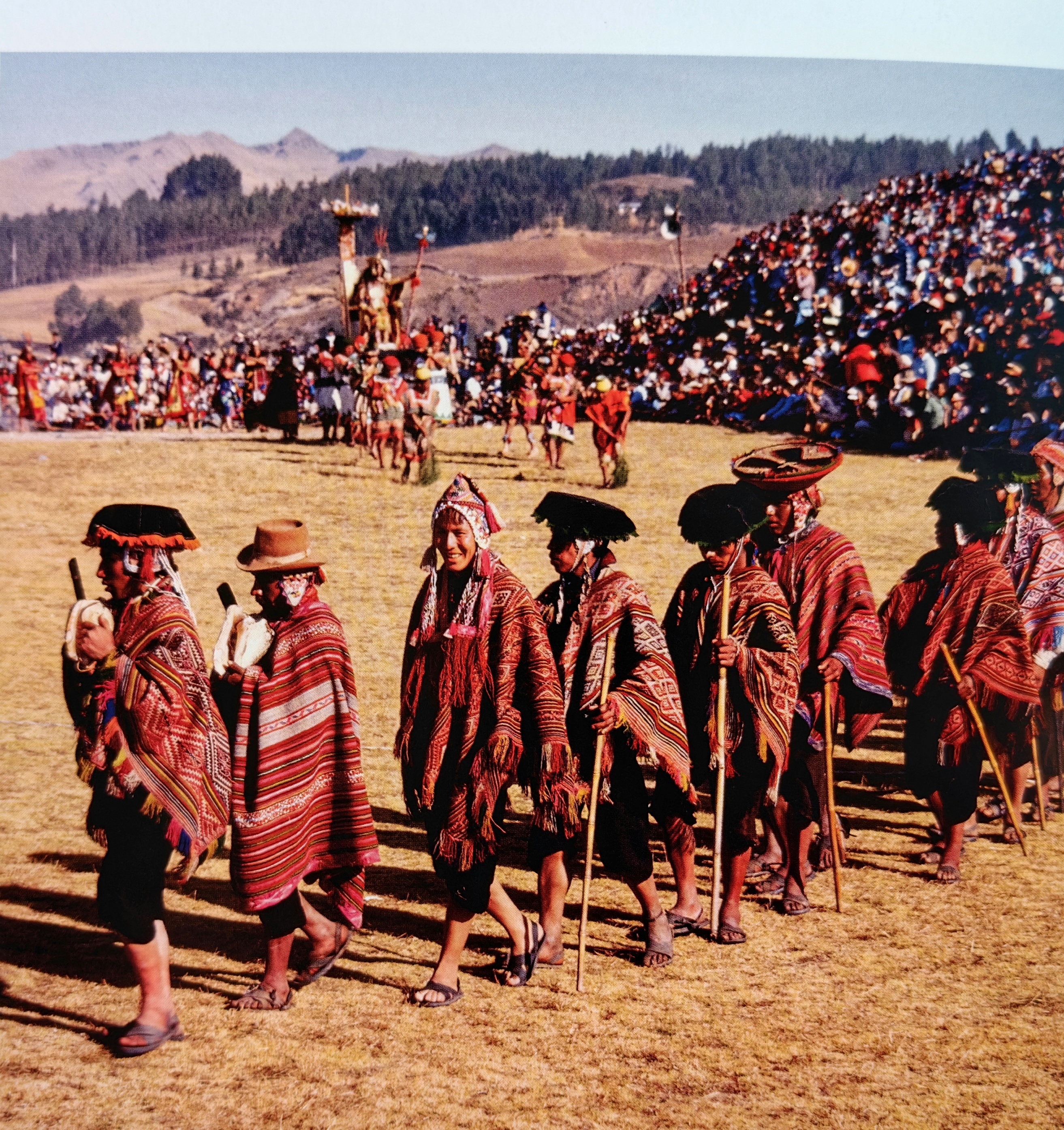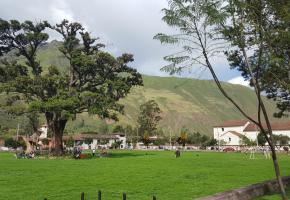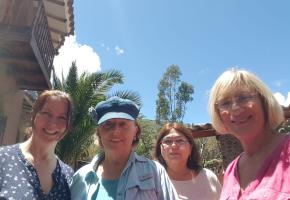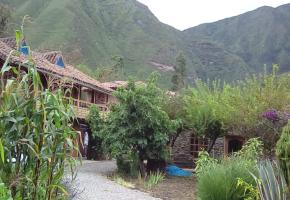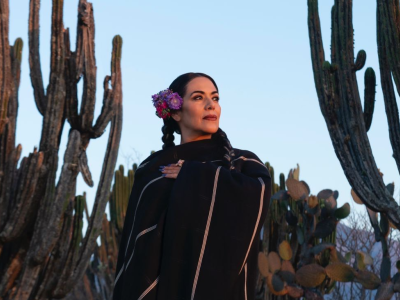In February 1982, inspired by the BBC series Flight of the Condor, British photographer Tony Hutchings bought a tent, a copy of the South American Handbook, and a ticket to Peru and set off on a six-month mission to capture images from the remotest corners of this vast and diverse country. He drove an old Volkswagen Beetle from arid deserts dotted with ancient archaeological sites up to icy Andean peaks, and flew down to the sweltering heat of the Amazon.
His goal was to get enough great shots of Peru’s dramatic scenery and rich indigenous heritage to publish a book on his return.
Now, 40 years later he has finally published Peru 1982, a book of 168 images taken on his trip. Some of the finest images from the book will be on display at the Peruvian Embassy in London from 20 April to 5 May.
Latino Life caught up with Tony to find out why 40 years ago he decided to leave behind his successful photographic studio in Shoreditch to jet off to Peru on such a mammoth venture.
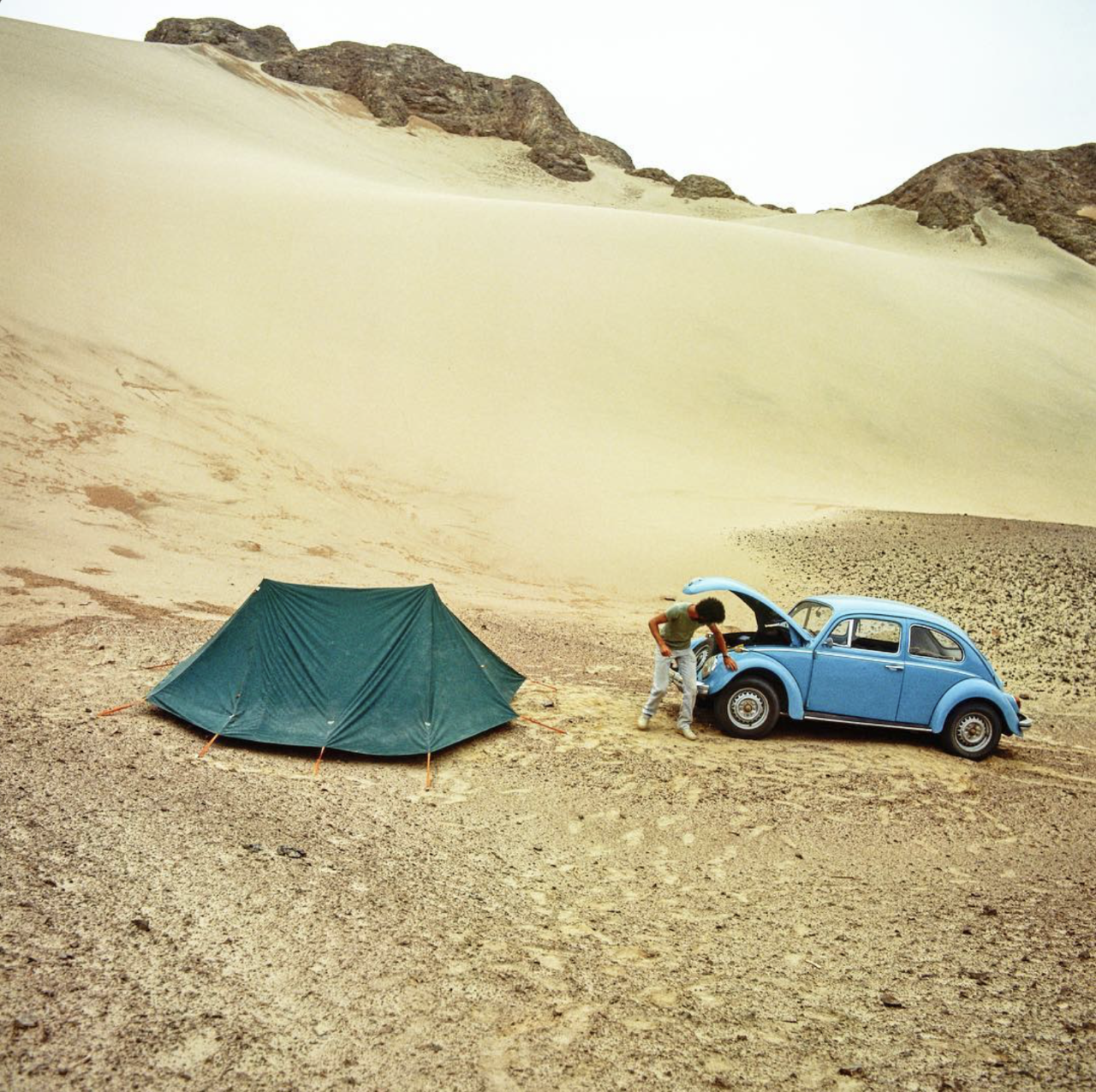
Latino Life: You have some incredible images in your book. What was it that lured you to Peru for this six month marathon of travel and photography?
TH: I was partly inspired by the BBC series Flight of the Condor that showed how majestic, spectacular and isolated the Peruvian Andes still was, and I devoured National Geographic articles about the region. Some Latin Americans I met in London told me that if I really wanted to experience all the wonders of Peru I should just hop on a plane and go. I was also working for some publishers at the time and one of them said that if I brought back enough good images they would consider publishing a book. When my brother said he would take care of the studio while I was away, I decided to grab the opportunity.
LL: What was the preparation like?
TH: Well, I had a fairly clear idea of where I wanted to go, what season to go, and what I want to photograph. I bought a tent and a sleeping bag, packed a copy of the South American Handbook, which was like a traveller's Bible at the time, and my cameras.
LL: What was your camera kit like? Did you have to lug around a lot of equipment?
TH: Not really. I took two Hasselblad 500 Cs, one with a 120mm lens and the other with a 50mm lens. A Polaroid back that I carried allowed me to print instant pictures that I could hand out to people I met, a kind of thank you for letting me take their photographs. I also took as much Kodak Ektachrome 64 ASA film that I could carry. It's a slow film but the images come out really sharp. I chose the Hasselblad because I liked the constraint of the format, it forced me to be creative. It also meant lots of interaction with the people I was photographing as you have to introduce yourself, and explain what you're up to with a camera that size.
LL: You did half the trip in a VW Beetle. That must have been a challenge at times?
TH: My initial plan was to base myself in Lima and take buses around Peru but I immediately discovered that it would be impossible to get to the remote regions I wanted to photograph. So I bought a 1967 1300cc Brazilian-built Beetle, and ended up doing about 15,000 km (9,300 miles) in it. I chose the Beetle because it was easy to get parts for it, even in the middle of nowhere. I filled up when I could in cities like Arequipa. Up in the Altiplano there were no gas stations and the Beetle guzzled fuel at 5,000 metres above sea level, so I had to take jerry cans of fuel with me. Other places, I would ask the locals and they'd point out a house where a guy was selling fuel from a barrel out the back. You took what you could. Asking for help with the car stretched my Spanish at times. I told a mechanic once that I had a problem with my plátanos (bananas) rather than my platinos(points).
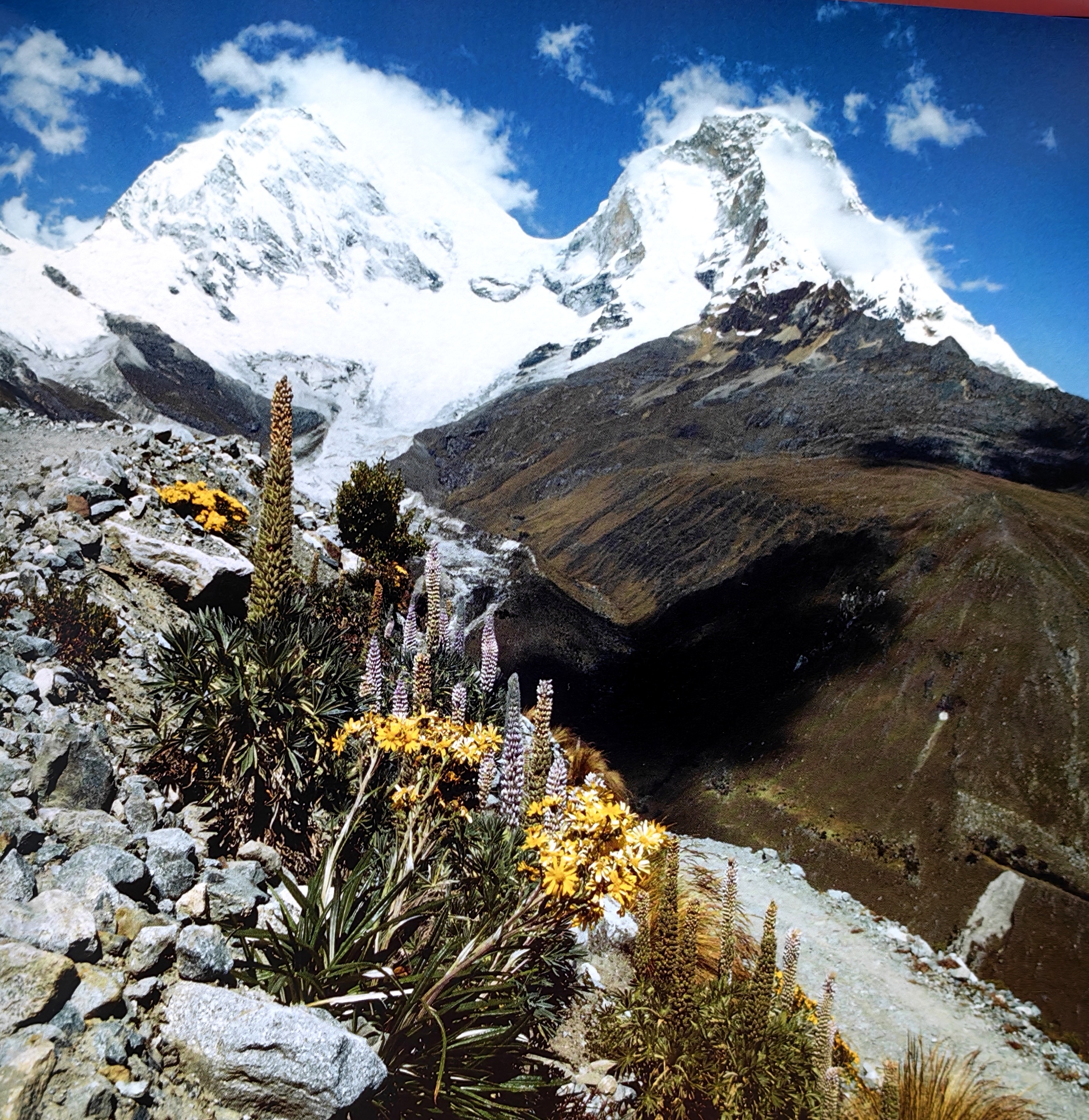
LL: Did you intend at the beginning to travel exclusively in Peru?
TH: Initially I thought I would go to Peru, pop in to Ecuador, maybe do a bit of Chile, Brazil, but in the end I only scratched the surface of what Peru has to offer. The country is just massive; five times the size of the UK and with these vast Andean mountains to get over and around. So I never had time to visit other countries, other than a hop across the border with Ecuador to extend my visa.
LL: Things were difficult in Peru in 1982, the country had just come out of 12 years of dictatorship, it was in the midst of a severe economic crisis, and Sendero Luminoso (Shining Path) guerrillas had carried out attacks in the capital Lima, did any of that affect your decision to travel?
TH: I think sometimes ignorance is bliss. I was on a mission to photograph these incredible people and places I’d read about so I was keen to get started. Some people I met in Lima played down the terrorism but luckily, I met a Peruvian guy called Pablo who worked in the film industry and he took me on his motorbike down to the Departamento de Cartografía at the Instituto Geográfico Nacional where I bought these beautifully detailed maps. Pablo then marked all the places I should visit, and other places - especially Ayacucho - that I should avoid. His recommendations all worked out for me. Even advice on what times I would be able to photograph condors flying through the Colca Canyon.
LL: So where did you start?
TH: I got a cheap room in a part of Lima called Barranco, which is considered very chic nowadays but back then then had a crumbling, faded glory. From there I made forays to the Inca site of Pachacamac on the coast, and San Pedro de Casta in the mountains, to test out the Beetle.
LL: What was it like to fly over the Nazca Lines, the mysterious geoglyphs spread over miles of arid hills?
TH: I was very, very privileged to meet Maria Reiche, a German lady who had been studying the Nazca Lines since the 1940s. She worked tirelessly to get the area protected, which it is now as a UNESCO World Heritage Site. Back then people were driving through it and you can see the tire marks and donkey tracks in some of my photographs.
I had to persuade the pilot of one of the small planes that flew over the lines to take the door off so I could get better shots, and he had to roll the plane to one side, which was a bit hairy. But I was really pleased with the photographs, especially the figure of the hummingbird.
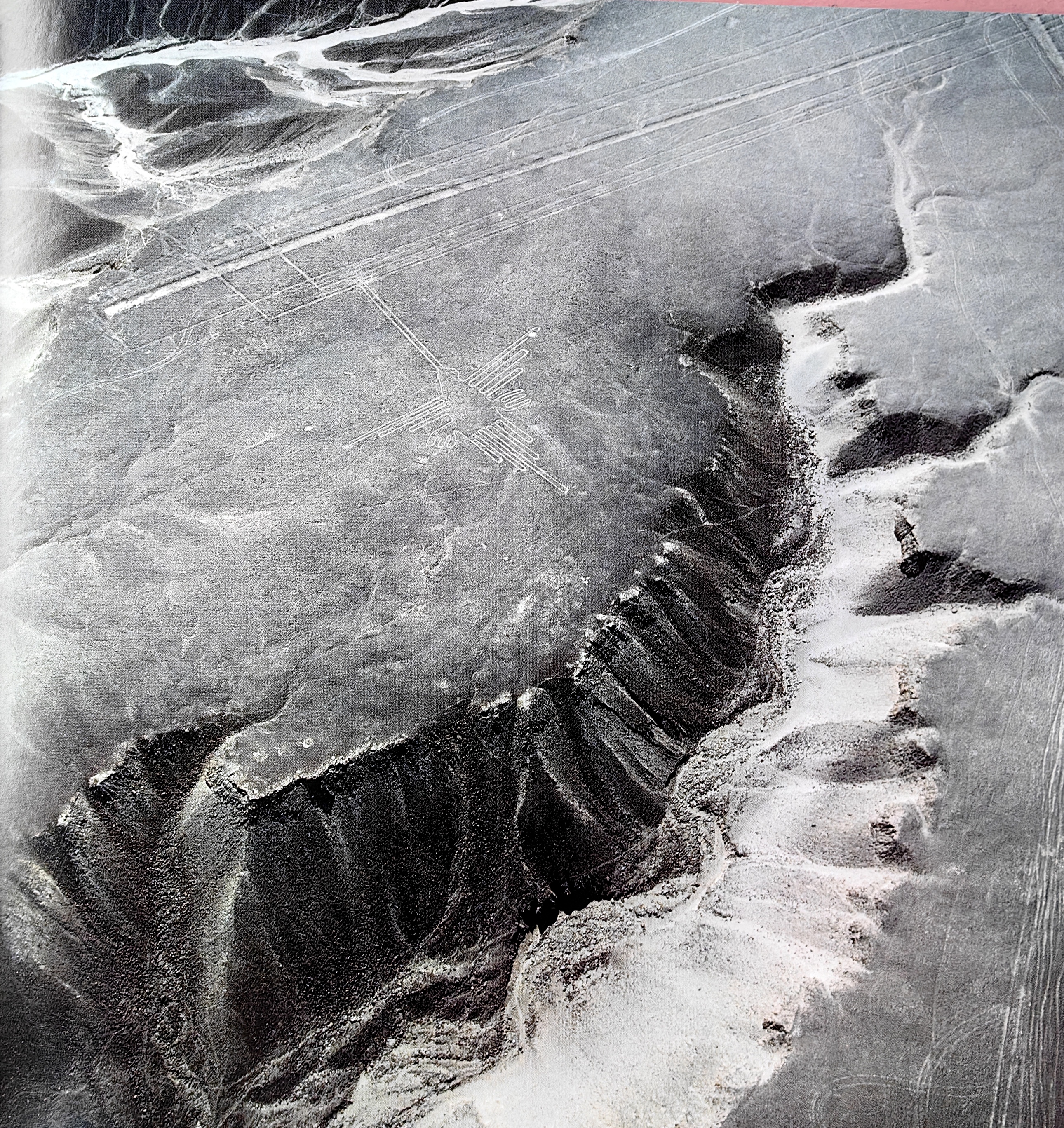
LL: What happened in April 1982 when the Falklands War broke out? Peru sided with Argentina. Were you affected at all?
TH: There was one incident when I was renewing my visa and had to cross a customs post over to Ecuador when a guard held up my passport and said: We’ve got a British! But everybody just laughed and cheered. Almost everywhere I went, the Peruvian people I met were kind and generous and friendly.
In truth, news about the Sendero Luminoso and the Falklands conflict kept foreign visitors away so when I was photographing the glorious Inti Raymi sun festival in Saqsaywaman I was the only foreigner there, a huge bonus for a photographer. Machu Picchu was the same. I would go in the afternoons and have this magical place all to myself.
LL: There is a lovely photo of three boys knitting hats in Taquile.
TH: I loved Taquile. It’s an island on Lake Titicaca and I got there on a boat from Puno. The men all knit these extraordinary textiles, expecially chullos (hats) that have different colours to show if they are single or married. If the top tassle is worn to the right it means you are happy, to the left sad. Prospective suitors have to knit a hat that will hold water if they want to get married.
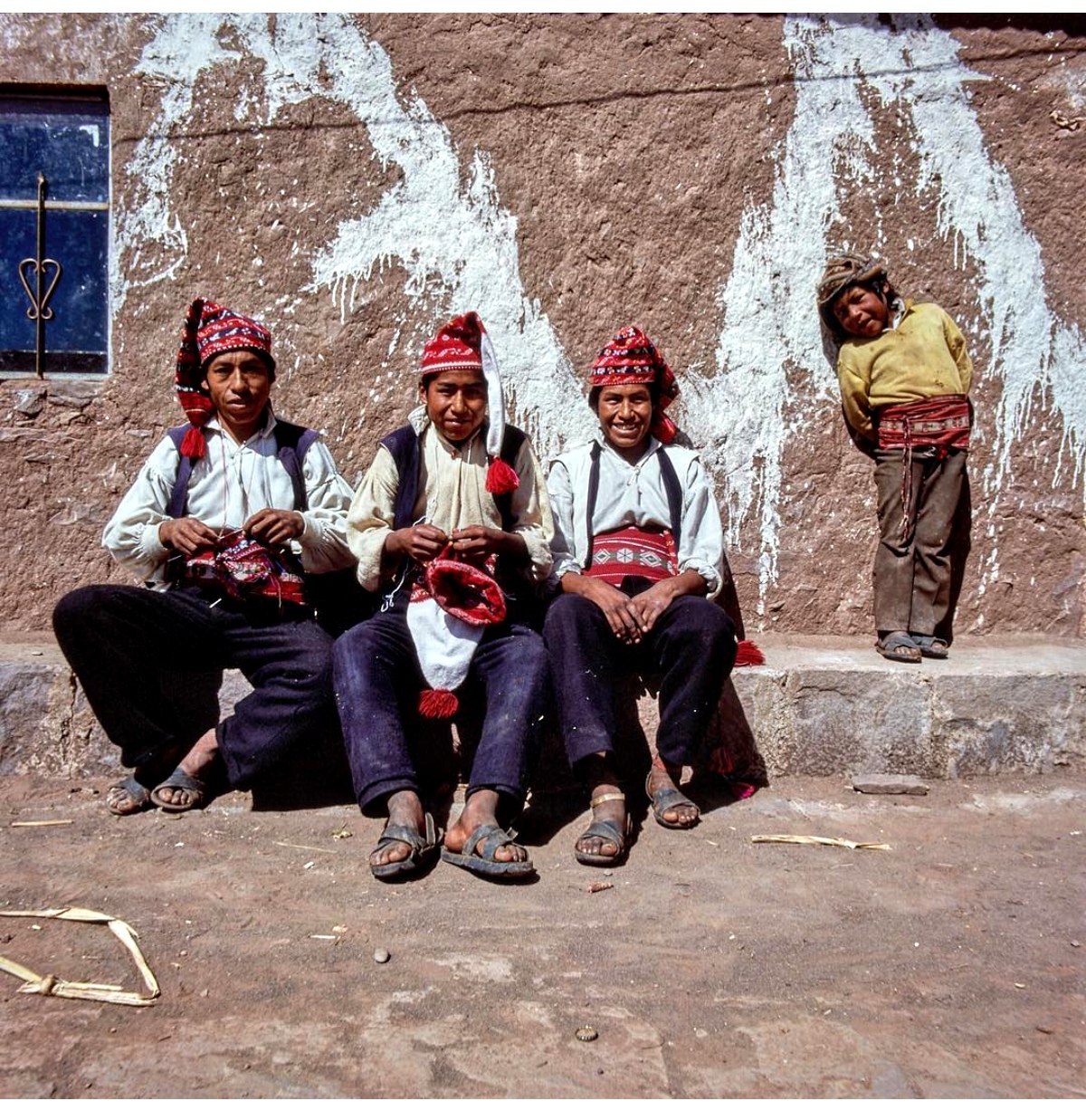
LL: You finished your Peru trip in the Amazon, visiting Shipibo and Campa villages and the floating village of Belén in Iquitos.
TH: I spent time in Laguna Yarinacocha and saw many river dolphins in the lake. The Shipibo women there make these geometric-patterned fabrics that reflect visions experienced by shamans who go into trances after taking the hallucinogen Ayahuasca.
After the tranquility of the jungle, the river port of Iquitos was like an assault on the senses. There were these big boats on the banks that were once used for transporting rubber, stilt houses and squalor in Belén, and a mix of people from all over the Amazon region that gave the city a real energy.
LL: After six months you returned to London with all these fabulous photographs. What happened to the book?
TH: The publishers were really happy and took the work to the Frankfurt book fair but could not get a US publisher on board due to the continuing conflict in Peru and the lack of tourist interest. So I was left with a couple of hundred photographs and amazing memories of this once-in-a-lifetime adventure I’d had in Peru.
LL: So, after nearly 40 years what was the impetus that finally led to the publication of Peru 1982?
TH: Lockdown. Suddenly I had time to look again at my pictures and relive these magical moments. Revisiting the richness and variety of my six-month trip contrasted with six months stuck indoors, when every day seemed to blend into the next. My kids, and other people said finish the book and get it published, and with the help of designer Wayne Ford I was able to achieve the quality book the photos deserve. The publication date coincided with the bicentennial of Peru’s independence so the timing turned out to be good too.
LL: Did it change you, spending so many months travelling solo through such spectacular scenery, speaking Spanish, and encountering such a diverse range of cultures?
TH: Absolutely. My six months in Peru was a life-changing experience. Culturally my eyes were opened to different ways of life and different and no less valid ways of perceiving our existence. Creatively, the strong colours and sharp light I observed in the Andes came to influence my studio photography. And of course I took up Salsa lessons when I got back to the UK.
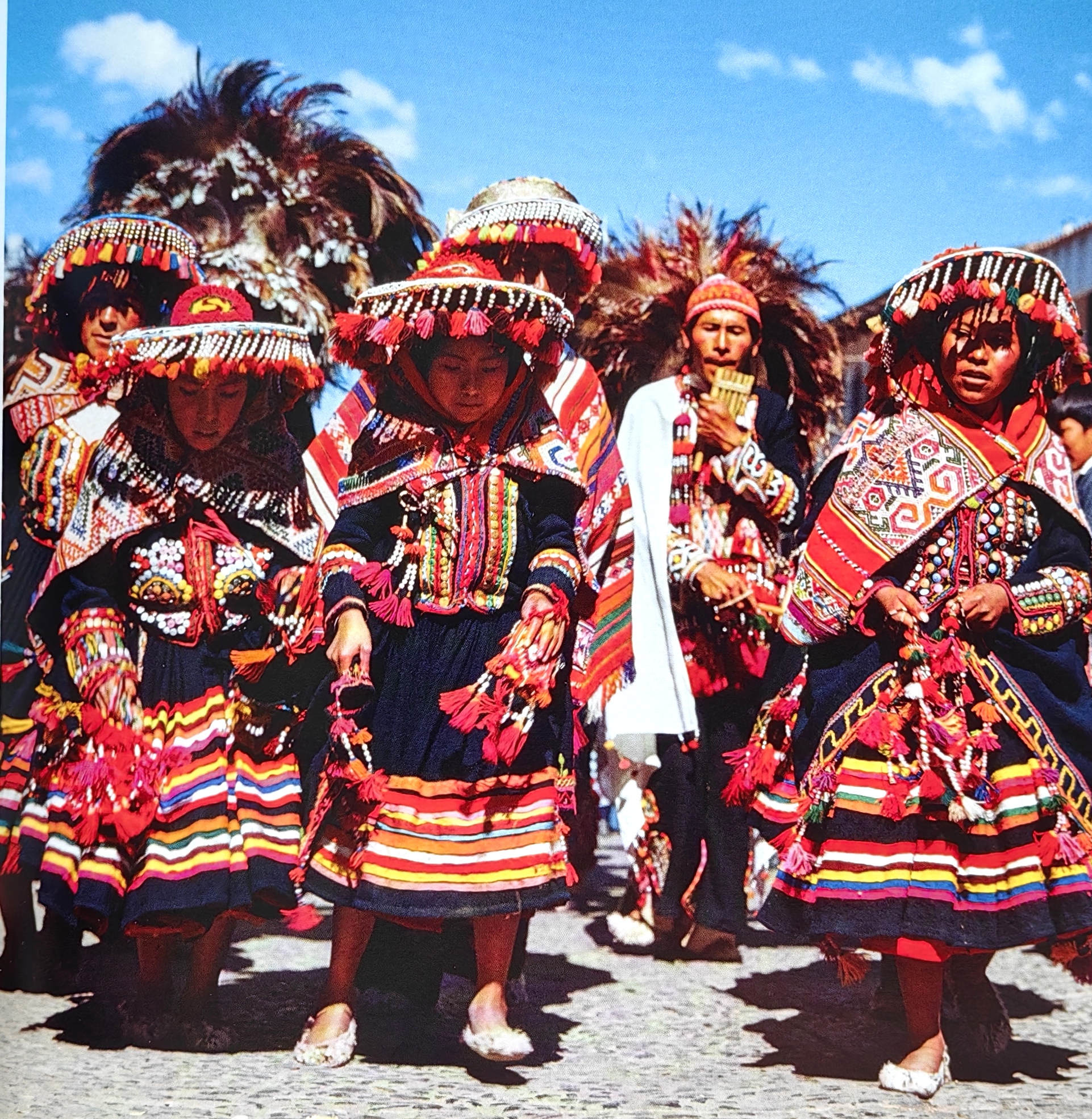
LL: Do you have any plans to return to Peru? Is there one place in particular you would like to revisit?
TH: I’d love to return to Peru. Where to return to? That’s a difficult one, probably the area around Huancayo in the central Andes. I found the towns and villages and traditions fascinating, but I’d be torn between that and Taquile on Lake Titicaca. The people on Taquile and their traditions are very special. But the whole country is marvellous. The city of Cuzco is just magical. The Cordillera Blanca is spectacular, and so is the Colca Canyon, Peru’s got everything.
LL: You are also championing Plant Your Future, an NGO working to reforest areas of the Peruvian Amazon.
TH: I met Jenny Henman of Plant Your Future at a talk I gave about Peru 1982 and was really impressed with the work they do in Loreto, Huánuco and Ucayali with marginalised and subsistence farmers, assisting them to move to sustainable farming that helps regenerate the rainforest. I am donating 20 percent from the sale of the photos in the exhibition to them.
LL: What advice would you give to anybody inspired to visit Peru after seeing your photos?
TH: To anyone thinking of doing serious travel in Peru, I would say do your research. Make sure that you are in the right places at the right times of the year. Avoid some of the obviously touristy places, the real Peru lies elsewhere. But whatever you do, go!
The exhibition Peru 1982: A Photographic Journey is open to the public weekdays 10 am to 4 pm from 20 April to 5 May at the Inca Garcilaso Gallery in the Embassy of Peru, 15 Buckingham Gate, London, SW1E 6LB.
For more details about Tony Hutchings and his book Peru 1982 visit his Instagram page @peru.1982 or website: https://www.tonyhutchings.co.uk
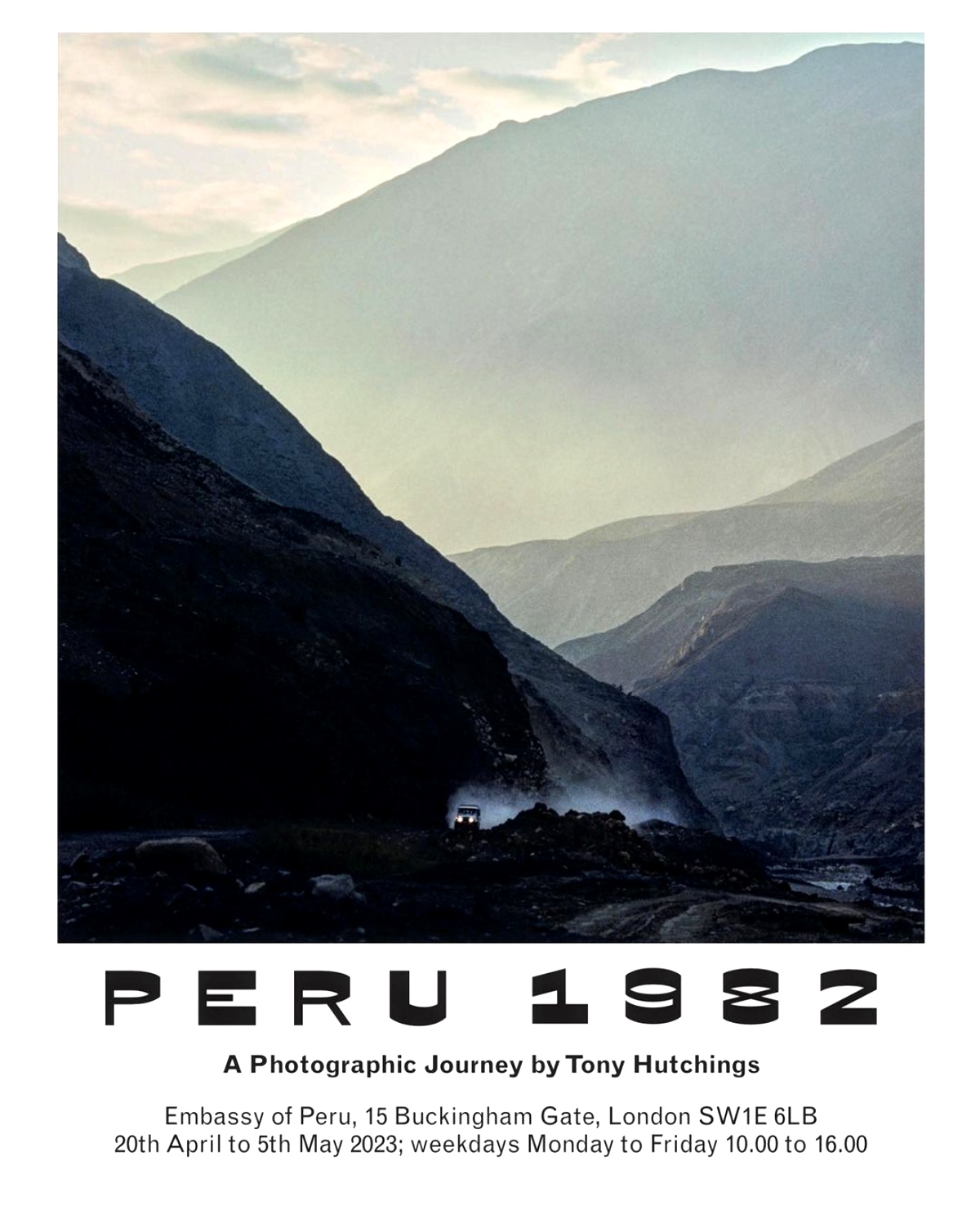
Russell Maddicks is the author of Culture Smart! guides to Cuba, Ecuador, and Nicaragua and is currently working on the second edition of Culture Smart! Mexico. Follow him on Twitter and Instagram @LatAmTravelist.


